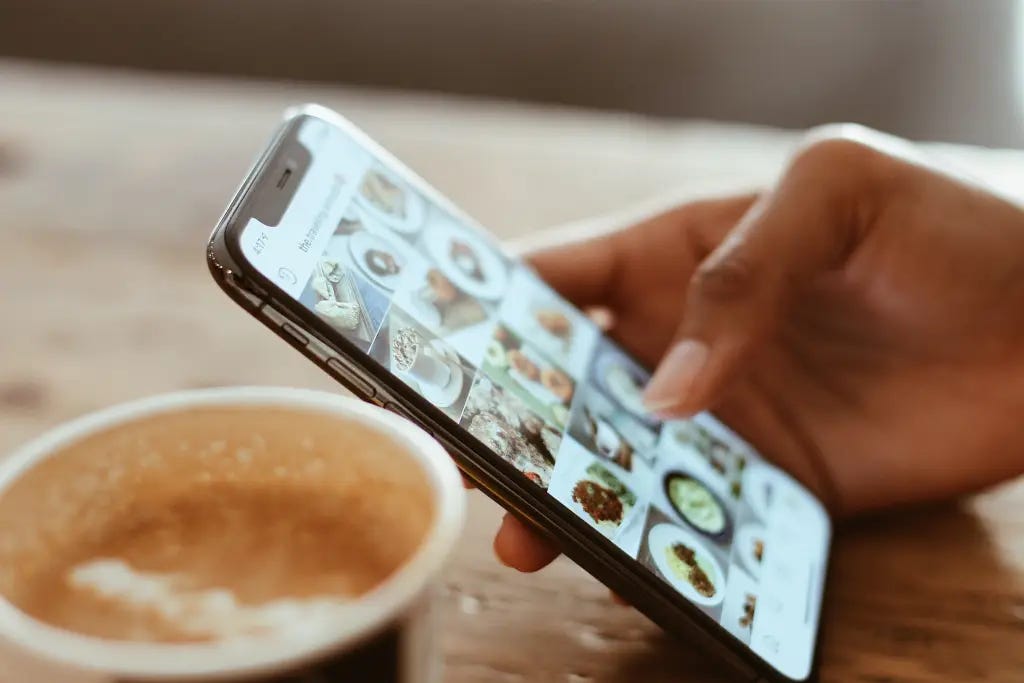TikTok Diagnosed Me With Autism
One day last summer, I returned from an idyllic Italian honeymoon ready to begin a new chapter. I mindlessly opened TikTok to find a message in all caps. “TO ALL THE FORMER PERFECTIONIST BURNED-OUT ACADEMICALLY GIFTED GIRLIES IN THEIR TWENTIES: DO YOU KNOW YOU HAVE AUTISM?” I shrugged it off. This was, after all, the same platform that tried to sell me on a crystal facial roller. And obviously this message wouldn’t apply to ALL burned-out academic types. Still it kept gnawing at me that summer, the first time I’d had in a while to be with my thoughts.
I was a math teacher. I was newly a wife. I put great effort into having my life “together” and being accountable to others. Yet, I had never shaken the sense that what was going on inside of my head was outside of the norm, or that the modest strides I’d made in “adulting” were hard-earned.
I kept scrolling TikTok to learn more, as high-energy “girlies” delivered nuanced monologues (or as nuanced as you can get in 2 minutes) on the ways autism looked for them. “Autism is not about a lack of empathy,” one woman said. This was news to me, having internalized that autism meant being a robotic white man like Sheldon on Big Bang Theory. To the contrary, I’d always had too many emotions and was prone to outbursts. I realized that I had profoundly misunderstood what autism was. I sought to correct my bias by seeking out content by actual autistic people, such as Sue-Ann Pian as the character Violet in As We See It. Violet is shown erupting into tears after she falls in love over a one-night stand one moment, and in the next scene jumps for joy in the ocean waves.
So what was autism, then? TikTok gave me a working definition, albeit oversimplified: a difference in the processing of sensory input. This unofficial definition started to click. I loved swimming but hated those frigid moments after getting out of the water. I had a growing collection of fuzzy blankets and abhorred spandex. Though I was outgoing, I felt intensely drained after a night out at a crowded restaurant or shopping under fluorescent lights. When it became too much, it felt like my brain was glitching.
The more I learned, the more it resonated. The more it resonated, the more I felt cheated. Why was I just learning this now—at age 28? Did everyone else know this about me? And yet my family, friends, even my therapist were surprised, then supportive.
TikTok had an explanation for that, too. I was (too) good at masking, meaning that I had been conditioned over a lifetime to present inoffensively. I (mostly) curbed my interruptions, twirled my hair tie instead of more obvious stimming, and worked to avoid being generally “too much”. I was a sponge and mimicked the body language and social cues of those around me as a trained people pleaser.
If I was so good at masking, then how did the TikTok algorithm know? The volume of information that TikTok gleaned about me based on my swipes that I didn’t even know about myself was alarming. The algorithm’s opacity makes this unknowable. Was it the swipes on ASMR, stuffed animals, mental health generally? Was it something more subliminal? More likely, it was also feeding this information to a wide audience and seeing for whom it resonated. It (probably) wasn’t psychic.
As I began talking about autism, the more it seemed to be everywhere. I learned that autism is one of many divergent neurotypes in the framework of neurodiversity. In my high-achieving STEM circles, the same ones I had been a part of for more than a decade, we now had a shared language that hadn’t existed before. Many who identified as neurodivergent were also recently diagnosed.
My TikTok “For You” page is now littered with messages “for late-diagnosed autistic girlies” and all of the ways that they had felt othered or misunderstood until their diagnosis. One might rightly be skeptical of the increasing number of self-diagnoses. However, self-diagnosis is increasingly common for non-cis white men who have been left out of traditional diagnosis.
There are obvious dangers here. TikTok cannot fill in the gaps of a broken healthcare system. And yet, it is a representative community of like-minded individuals like none I have been part of before. I kept scrolling. And, once the dance videos on my feed were eclipsed by neurodivergent “story times”, it was easy to feel consumed by this new identity. I began to distrust my own self-assessment. So, I sought out an official source.
Just a few weeks ago, I sat in a flourescent-lit office with no natural light. I underwent a thorough battery of tests and surveys as part of neuropsychological testing. It was confirmed: I have autism (and ADHD, the subject of another post). Though validating, I was underwhelmed.
My autism diagnosis has caused me to update my mental model of other people more than it has my own. After all, my brain hasn’t changed. But, in realizing that neurotypicals operate effortlessly in many ways that I do not, I stopped striving to act as such. My diagnosis saved me from an unwinnable quest to be “normal” and freed me up to be myself. So, while others might question whether I would even want to know, I am grateful for the TikTok algorithm’s decision that summer day.




